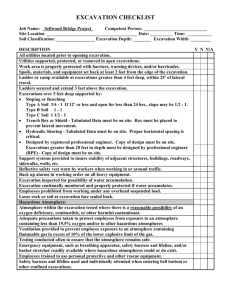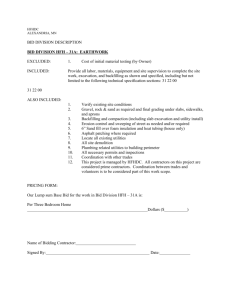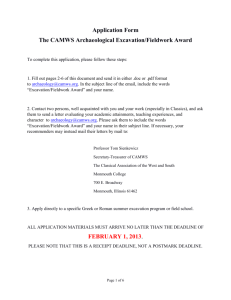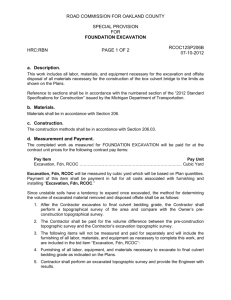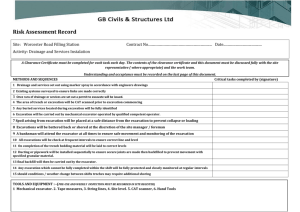Excavation Works
advertisement
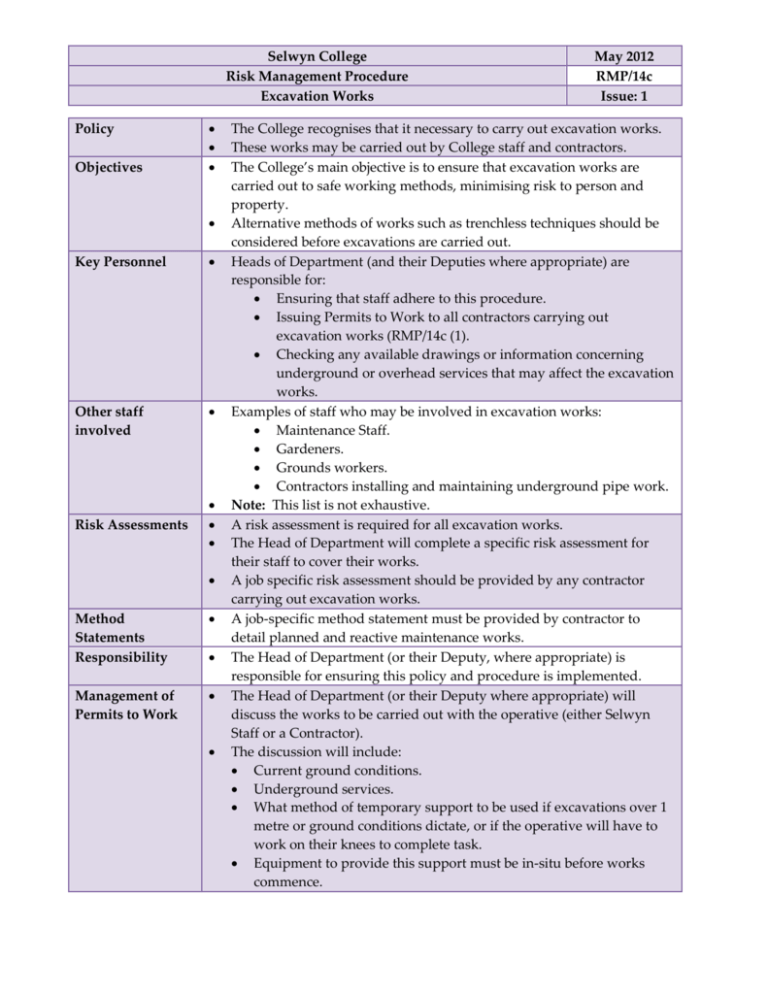
Selwyn College Risk Management Procedure Excavation Works Policy Objectives Key Personnel Other staff involved Risk Assessments Method Statements Responsibility Management of Permits to Work May 2012 RMP/14c Issue: 1 The College recognises that it necessary to carry out excavation works. These works may be carried out by College staff and contractors. The College’s main objective is to ensure that excavation works are carried out to safe working methods, minimising risk to person and property. Alternative methods of works such as trenchless techniques should be considered before excavations are carried out. Heads of Department (and their Deputies where appropriate) are responsible for: Ensuring that staff adhere to this procedure. Issuing Permits to Work to all contractors carrying out excavation works (RMP/14c (1). Checking any available drawings or information concerning underground or overhead services that may affect the excavation works. Examples of staff who may be involved in excavation works: Maintenance Staff. Gardeners. Grounds workers. Contractors installing and maintaining underground pipe work. Note: This list is not exhaustive. A risk assessment is required for all excavation works. The Head of Department will complete a specific risk assessment for their staff to cover their works. A job specific risk assessment should be provided by any contractor carrying out excavation works. A job-specific method statement must be provided by contractor to detail planned and reactive maintenance works. The Head of Department (or their Deputy, where appropriate) is responsible for ensuring this policy and procedure is implemented. The Head of Department (or their Deputy where appropriate) will discuss the works to be carried out with the operative (either Selwyn Staff or a Contractor). The discussion will include: Current ground conditions. Underground services. What method of temporary support to be used if excavations over 1 metre or ground conditions dictate, or if the operative will have to work on their knees to complete task. Equipment to provide this support must be in-situ before works commence. Selwyn College Risk Management Procedure Excavation Works May 2012 RMP/14c Issue: 1 Inspection and Monitoring Reporting and record keeping Additional information Review Appendix Where there is a risk of falling materials into excavation, if toe boards etc. are required. HARD HATS MUST BE WORN IN THE EXCAVATION AT ALL TIMES. Check for scaffold footings and foundations of walls. Agree an exclusion zone for vehicular traffic around the excavation and cordon as necessary. Agree exclusion zone for pedestrians and cordon as necessary. These discussions must be recorded and documentation signed by both parties. The excavation must be inspected by the Head of Department (or competent Deputy) each day prior to works commencing. Details of all inspections must be recorded. Should there be a fall of rock or earth or the weather conditions significantly change during the day the operative must contact the Head of Department (or Deputy) to re-inspect the excavation. All Permits to Work issued must be recorded on a central Register held electronically on a shared drive (Shared Space/R drive/File: Permits to Work Register). A copy of all completed Permits to Work must be held by the authorising Head of Department for 5 years after completion of the works. HSE guidance ‘Structural Stability during excavations’. The Maintenance Manager will review this document bi-annually, or following and changes in legislation. All/any changes will be advised to the Health and Safety Working Group prior to publication. Evacuation Works Permit to Work and Inspection Sheet RMP/14d (1)

